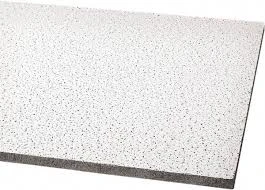Dec . 04, 2024 14:34 Back to list
High-Quality Metal Drywall Ceiling Grid Solutions for Modern Interiors
Understanding Metal Drywall Ceiling Grids A Comprehensive Overview
Metal drywall ceiling grids are essential components in modern interior construction, precisely engineered to support drywall panels and deliver a clean, aesthetically pleasing finish to ceilings. These grids provide a reliable framework for various finishes while serving functional purposes, making them integral to both residential and commercial buildings.
What is a Metal Drywall Ceiling Grid?
At its core, a metal drywall ceiling grid consists of a network of metal channels and cross tees designed to hold drywall sheets in place. Typically constructed from galvanized steel, these grids offer durability and resistance to warping, moisture, and corrosion, ensuring longevity and reliability in various environments.
Metal grids come in various configurations, including 15/16-inch and 1-inch systems that dictate the spacing and appearance of the ceiling. The choice between different systems depends on the project's design requirements and the specific installation needs.
Benefits of Metal Drywall Ceiling Grids
1. Durability Metal grids are incredibly robust compared to traditional wooden framing, which can sag or warp over time. This ensures that the drywall remains level and secure, thereby enhancing the ceiling’s overall lifespan.
2. Moisture Resistance In areas prone to humidity, such as bathrooms and kitchens, metal grids are less susceptible to moisture-related issues. This quality helps in maintaining the integrity of the ceiling and prevents mold growth.
3. Fire Resistance Metal grids contribute to fire safety in buildings, as they are non-combustible. This property can be crucial in meeting local building codes and ensuring the safety of occupants.
4. Ease of Installation Professionals favor metal drywall ceiling grids because they are relatively easy to install. The grids can be cut to size and adjusted for varying ceiling heights, allowing for bespoke installations.
5. Acoustic Performance Many metal grid systems are designed to accommodate acoustic tiles, which can help reduce noise pollution in busy environments, such as offices and schools. This can significantly enhance comfort and productivity.
metal drywall ceiling grid

6. Flexibility Metal grids allow for the quick and easy installation of lighting fixtures, ventilation systems, and other ceiling-mounted equipment. The accessibility provided by the grid system means that maintenance and replacements can be accomplished without significant disruption.
Installation Process
The installation of metal drywall ceiling grids involves several key steps
1. Planning Begin by assessing the area to determine the grid layout and ensure it meets building codes.
2. Suspending the Main Runner The main runners are suspended from the ceiling using wires. These runners form the backbone of the grid.
3. Adding Cross Tees Once the main runners are in place, cross tees are inserted at specified intervals to create a grid pattern. This forms the framework for attaching drywall panels.
4. Drywall Installation After the grid is set up, drywall sheets are then attached to the metal framework using screws, creating a smooth and even ceiling finish.
5. Finishing Touches Once the drywall is in place, taping and mudding the seams are necessary before finishing with paint or texture.
Conclusion
Metal drywall ceiling grids are a crucial part of contemporary construction, combining functionality with aesthetic appeal. Their durability, moisture and fire resistance, ease of installation, and sound-dampening abilities make them a favored choice among contractors and builders. Whether renovating a home or constructing a commercial space, understanding the value and application of metal drywall ceiling grids can lead to better design decisions and more successful projects. As building standards evolve, these grids will undoubtedly continue to play an integral role in creating safe, efficient, and attractive environments.
-
Durable Ceiling T Grid Systems | Easy InstallationNewsAug.29,2025
-
PVC Gypsum Ceiling: Durable, Laminated Tiles for Modern SpacesNewsAug.28,2025
-
Pvc Gypsum Ceiling Is DurableNewsAug.21,2025
-
Mineral Fiber Board Is DurableNewsAug.21,2025
-
Ceiling Tile Clip Reusable DesignNewsAug.21,2025
-
Ceiling T Grid Modular DesignNewsAug.21,2025







